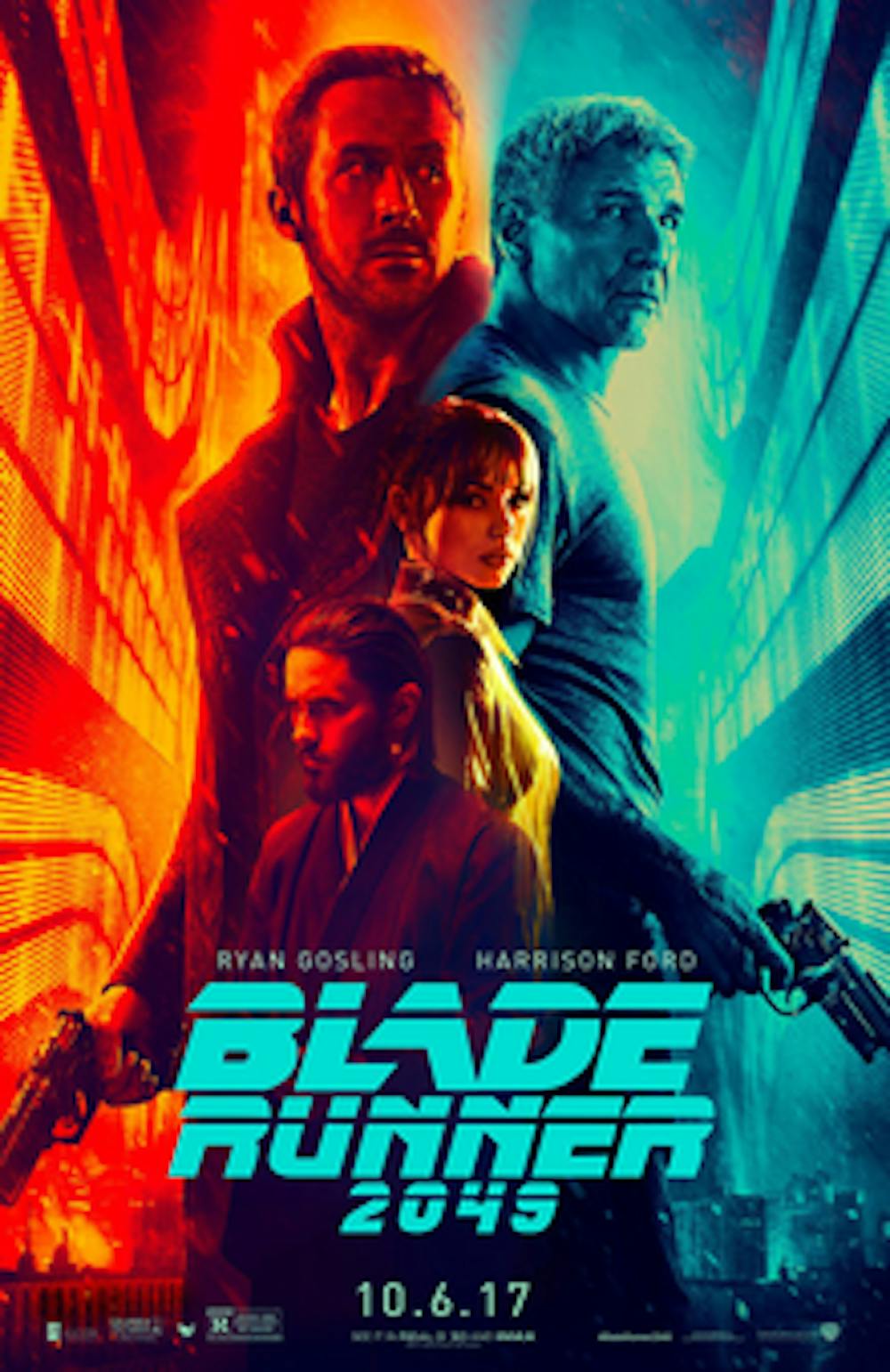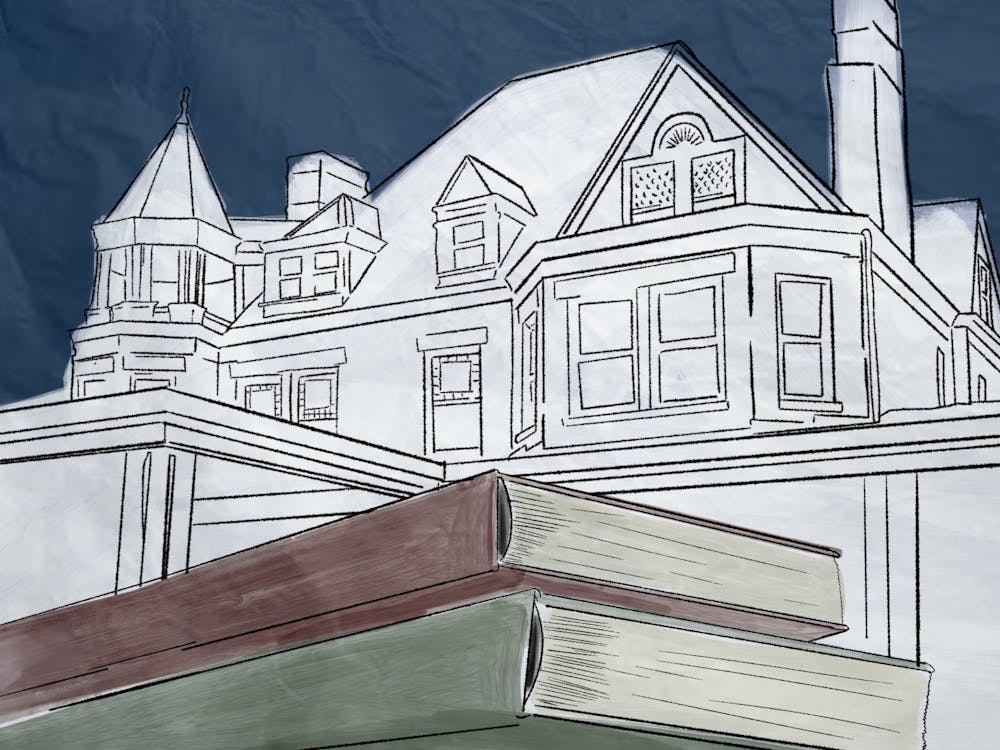For all its slick futuristic trappings, the heart of “Blade Runner 2049” is something like a fairytale. The long-awaited new chapter to Ridley Scott’s 1982 original returns to the brutally vast, rain-blitzed megalopolis of Los Angeles 30 years later, and the titular blade runner is the stoic Officer KD6.3-7 (Ryan Gosling) — K for short. Like Rick Deckard (Harrison Ford) in the first film, K is tasked with hunting down and euphemistically “retiring” older rogue replicants — the bioengineered androids created to serve as convenient labor for humans.
But we quickly learn K himself is a replicant — specifically an enhanced, newer-generation Nexus 9 model bred for perfect subservience — trained to kill his own kind. But despite his programming, K is unexpectedly sentimental. He begins to suspect he’s destined for something greater, hoping to become a genuine chivalric hero — a toy horse, paralleling an origami unicorn in the original, even becomes a key emblem of his connection to humanity — rather than Deckard’s cynical hard-boiled detective.
The central mystery of “Blade Runner 2049” revolves around the search for a missing, miraculous heir — the progeny of Deckard and Rachael (Sean Young), his replicant sweetheart from the previous film, who has since died in childbirth. Replicant manufacturer Niander Wallace (Jared Leto), imbuing his drama-school freshman impression of a god complex with an affectedness that’s more tiresome than menacing — believes the child could reveal the secret to engineering replicants’ abilities to reproduce. If controlled, this function would virtually guarantee his domination of Earth and beyond. K’s boss, the hard-headed Lieutenant Joshi (Robin Wright) warns that the child’s existence could “break the world” — if replicants realize they can reproduce on their own, they could quickly overtake their human masters — and tasks him with retiring it.
One of the film’s recurring phrases, from a “Post-Trauma Baseline Test” that K is routinely subjected to after missions, further hints at this puzzle of heritage and individuality — “Cells interlinked within cells interlinked / Within one stem. And dreadfully distinct / Against the dark, a tall white fountain played.” It’s a verse from Vladimir Nabokov’s “Pale Fire.” A cryptic, metafictional novel with two main narrative strands, “Pale Fire” is comprised of a long poem by the fictional John Shade, enveloped within commentary from Shade’s neighbor, Dr. Charles Kinbote, an academic who believes himself the exiled king of a distant eastern European nation.
It’s easy to draw parallels between K and Kinbote. As the former chases the truth, all the clues suggest that he’s the prince in hiding everyone’s been looking for. Halfway through the film, it seems only a matter of time before he accepts his fate as the replicant messiah.
If this setup seems a little too perfect, that’s because it is — it turns out that the lost child isn’t a son — but a daughter, the brilliant memory fabricator Dr. Ana Stelline (Carla Juri). K’s youthful recollection of the toy horse, supposedly a gift from his father, was in fact implanted from her own experience. This plot point is a smart upending of the overplayed “chosen one” trope, and the film is a lot more interesting once it’s clear K is no preordained savior — his role is to be not the replicants’ prince but a mere foot soldier, willing to sacrifice himself in the service of a greater cause.
Likewise, Villeneuve’s direction reflects the absence of a golden-boy hero by spending less time lingering on Gosling’s coolly handsome face than on the slight, darkened form of his increasingly brutalized body. The climactic battle between K and Wallace’s Terminator-esque replicant henchwoman, the ironically-named Luv — played with chilly, mesmerizing ferocity by Sylvia Hoeks — is unflinchingly vicious. It’s a knock-down, drag-out affair that takes place aboard a sinking vessel rapidly taking on water, and relishes in the grim, excruciating attrition of two superhumans, trying to destroy each other by any means possible.
Roger Deakins’ sweeping cinematography renders this world beautiful, even as it seems increasingly apocalyptic. Even at roughly three hours, the film never stalls. Rather, it is content to meander across its wondrously imagined spaces, from the wide-open space and sharp contrasted lines of Wallace Corporation’s headquarters to an eerie strobe-lit fistfight in an abandoned hotel ballroom, utterly silent save for holograms of Marilyn Monroe and Elvis glitching in the background.
Las Vegas becomes a fallout-wracked wasteland with tangerine skies — its desert strewn with massive statues that recall the “colossal wreck, boundless and bare” swallowed up by the “lone and level sands” of Percy Bysshe Shelley’s “Ozymandias.” That’s not the only visual element of the mythic, either — one of the most breathtaking images renders an advertisement for K’s software-program girlfriend Joi (Ana de Armas) as a towering neon-skinned goddess.
Yet for all these innovations, the film’s storytelling is also frustratingly retrograde. While de Armas plays Joi with a sweet earnestness that makes it easy to root for her relationship with K, she’s also never granted much characterization beyond the promise that she’ll tell you “everything you want to hear.” The problem isn’t so much that she exists. After all, American society isn’t too far removed from the conception of women as literal products designed to please men, and it certainly could have been an intriguing way to further explore the franchise’s eternal question of what makes one human. Her manufactured creation and eagerness to be a “real girl” offer clear parallels to the replicants’ desire for freedom.
But the film never grants her the narrative agency to raise these questions, and her role, which amounts to being little more than K’s cheerleader, remains largely extraneous to the main adventure. Mackenzie Davis is similarly underutilized as Mariette, a hooker with a heart of gold who’s part of the replicant resistance yet gets to do little more than serve as a sexual surrogate for Joi and conveniently rescue K when he’s in a bind. Even Luv, a riveting antagonist who sheds tears as she kills, isn’t granted the same cerebral depth and philosophical monologues that characterized renegade replicant Roy Batty (Rutger Hauer). Batty is Luv’s analogue in the original, and the latter’s unequivocal ice-queen cruelty makes the film’s distinction between heroes and villains disappointingly straightforward.
Likewise, the few speaking characters of color are largely relegated to single scenes as devices to assist K on his quest — cast as seedy brokers or unscrupulous orphanage overseers. It seems odd, too, that the film depicts a future undeniably influenced by East Asian culture yet completely void of any Asian people. Japanese characters plaster Los Angeles’s holographic cityscape, a cheongsam is featured as one of Joi’s sexier outfit options, and the grimy, claustrophobic slums were reportedly influenced by “coffin cubicles,” a type of subdivided low-income housing unique to Hong Kong.
There are moments that hint at this world’s potential to explore a more fascinating, fully realized future. These include scenes in which a woman visits Wallace Corporation in consultation to buy a “pleasure model” replicant of her own, Luv deploys drone missile strikes from the comfort of the corporation’s pristine headquarters all while receiving a manicure or meeting Freysa (Hiam Abbass), the female head of the replicant resistance. Yet they’re all fleeting, like tears in rain, and their presence only leaves one wanting more. “Blade Runner 2049” is an unquestionably stunning film, but one wishes it were a little more human.





